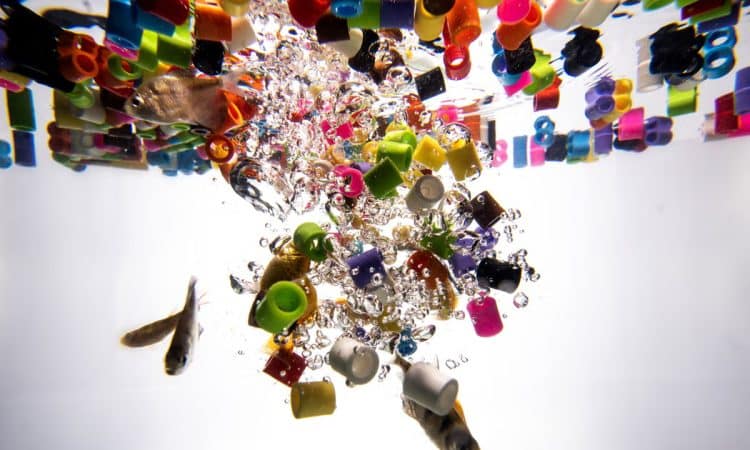Trillions of Microplastics from Your Cleaning Product Every Month: Study Sounds Alarm

A new study has found that microplastics are released into the environment in trillions by melamine foam sponges used to clean households worldwide each month.
These sponges are known for their ability to remove even stubborn stains with ease, thanks to their distinctive abrasive properties.
However, a new study published in the Environmental Science & Technology journal estimates that fibers from these cleaning products release trillions of toxic microplastic particles globally each month, which could impact human health.
The sponges are made of a plastic polymer that’s put together into a soft, lightweight abrasive foam, which makes them perfect for making scrubby cleaning products.
But as they wear away with use, the foam breaks down into smaller pieces, releasing microplastic fibers (MPF) into sewer systems with each wash.
These toxic microplastics could be eaten by wildlife and then make their way back to humans via the food chain. They’ve been linked to a number of health issues in humans, including disruptions to the immune and endocrine systems, as well as several types of cancer.
Study Insights on Melamine Foam Breakdown
In the new study, the researchers looked at how quickly the melamine foam breaks down and figured out how many microplastic fibers it sheds with use.
They rubbed the foam from different brands repeatedly against textured metal surfaces to see how quickly it would wear down. The study found that a single sponge can release over 6.5 million fibers per gram of worn-out sponge. “The sponge wear could release 6.5 million MPFs/g, which could mean that sponges are responsible for a global emission of 4.9 trillion MPFs,” the researchers said.
Sponges made from denser foam wore down more slowly and produced fewer microplastic fibers, they said. Next, the researchers estimated how many microplastics might enter the environment from the use of these foams by looking at Amazon’s monthly sales.
They figured that 1.55 trillion fibers from melamine sponges could be released each month. The scientists also found that the rate and capability of MPF production generally increased with increasing roughness of the metal surface and density of the struts, respectively. However, they noted that the actual amount could be much higher, as the analysis only took into account one retailer.
Recommendations for Reducing Environmental Impact
To address the environmental toxicity caused by these products, the researchers suggest that manufacturers create denser and tougher sponges that are more resistant to wear. They also recommend that consumers opt for natural cleaning products that do not use plastics.
By taking these steps, both manufacturers and consumers can help reduce the amount of microplastics released into the environment, mitigating the potential health risks associated with their accumulation in ecosystems and the human food chain.

